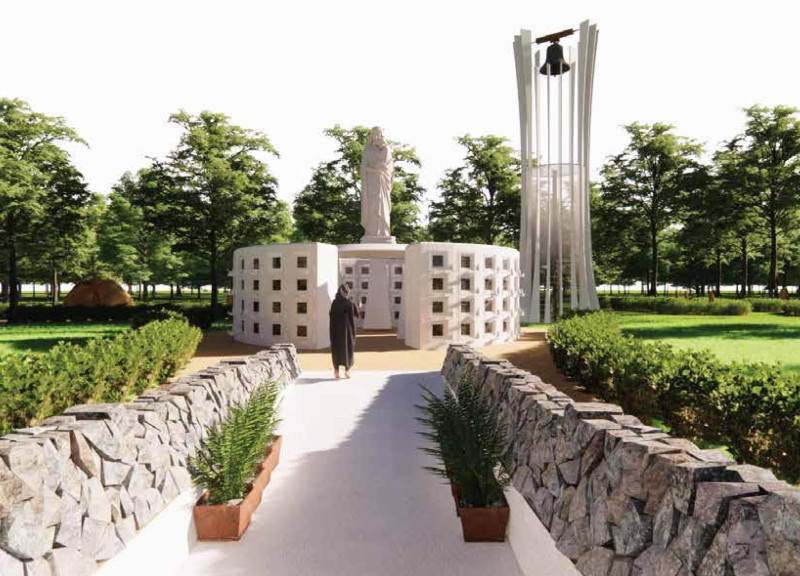5 key facts about this project
The Chamber of Memories provides a space that thoughtfully addresses the themes of life and death. Located in a peaceful environment, it serves as a memorial columbarium designed to honor the memories of those who have passed. The design concept focuses on the connections between the human soul and body, linking them to figures like Mother Mary and Jesus. This connection fosters an atmosphere that encourages reflection and remembrance.
Symbolism of Form
Central to the design is the shape of a womb, representing the beginning of life. This form is essential to the columbarium, highlighting the caring aspects of memory and the continuous cycle of existence. It creates a protective space for visitors, aiming to provide comfort and support during moments of remembrance.
Historical Context
The layout of the site reflects a mindful engagement with historical burial practices. It draws inspiration from notable structures such as the Neolithic Burial Mound at Newgrange in Ireland and the Kurgan near Kerch, Russia. These references enrich the design by connecting it to traditional customs. By incorporating these elements, the Chamber of Memories creates a link between past rituals and present expressions of grief, making the visitor experience more meaningful.
Natural Integration
Including perennial flowers, lilies, and phloxes further connects the space to nature. These plants symbolize life and continuity, adding an inviting aspect to the memorial. This natural element brings a sense of growth and renewal, contrasting with the permanence of the columbarium.
Material Selection
The choice of materials plays an important role in shaping the environment. The project uses white polished ceramic for interior features, white concrete for the walls, and grey marble. Together, these materials create a calm setting that supports contemplation. This careful selection enhances the aim of the design: to honor memory through thoughtful details.
An elaborate detailing at the entryway invites visitors in. The smooth transition between materials helps guide them into the heart of the space, encouraging engagement with the thoughtful nature of the design.






















































